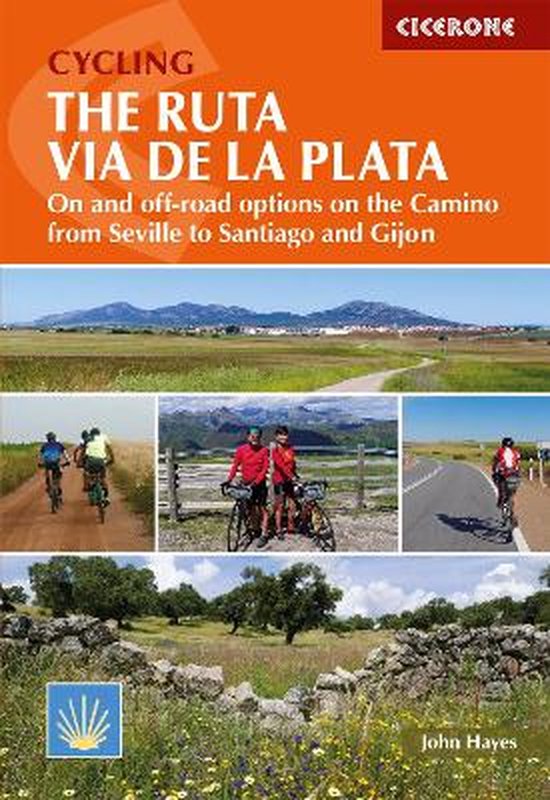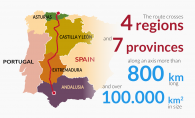- The original route (described below) runs between Seville and Gijon
- Later the route became a pilgrimage route
- Pilgrims leave the original route after Zamorra and turn toward Santiago
Quick link to the official Ruta via de la Plata website (English).
800 kilometers of cycling through impressive landscapes and thousands of years of history
At the beginning of the era, the Romans decided to build a north-south connection of the west side of Iberian Peninsula. In the 2,000 years since the route was first created, countless people have crossed it; merchants, soldiers, pilgrims…cyclists have only been present the last decade or so, but their numbers are growing fast!
The Via de la Plata (or, more accurately, the Ruta Via de la Plata) runs from Seville in the south to Gijon in the north through thousands of years of history. Along the way, you pass through some of the most beautiful places in Spain (such as Caceres, Merida Salamanca, Zamorra, and Leon). This video gives you an idea of what you may come across on the way.
The places on the route have joined forces to maintain and publicize the Via de la Plata. As a cyclist you can either choose to ride on the paved or unpaved option, the latter requires a mountain bike with a luggage carrier and bike bags. Many Spanish cyclists prefer this way of travelling on a bike.
The paved route is divided into twelve stages between 53 and 102 kilometers, but of course, you can determine your own stages. On the Via de la Plata website there is a list of accommodations.
There are maps of each of the twelve stages, but it is much more convenient to put the route on a GPS. The route attempts to keep cyclist off of busy roads as much as possible, but there are a few parts where that was unavoidable and you will have to endure some busier roads as well. The majority of the route follows the N630, the old national road connecting Seville and Gijon (one of the longest roads in Spain), which has lost the majority of its traffic due to the large north-south freeway system. Get an idea of what you will experience by watching this video

John Hayes’ travel guide is the standard work for those who want to cycle the Ruta de la Plata (to Santiago or Gijon) paved or unpaved.
Some people use the Via de la Plata to cycle from Seville to Santiago de Compostela, meaning they turn west when they reach the Camino Frances. Unfortunately, these people miss out on getting the most important stamp in their Via de la Plata booklet – that of Gijon.
The Via de la Plata is not known as being Spain’s most challenging cycling route. But Spain is rarely flat, and you will be met by some higher mountains in the northern parts of the route. After completing this feat, however, your end goal will be in view and you will look back on those moments with satisfaction knowing you intimately experienced some of the most beautiful areas of Spain.
All of the information can be found on the Ruta Via de la Plata website, which also has an English version. The Via de la Plata app is also extremely handy and can be found in Google Play or the Apple App Store under: La Ruta en Bici.
Name confusion: the “plata” is the name Via de la Plata does not mean silver. The word “plata” in the name is actually derived from an Arabic word meaning tilted or paved, making the translation “The Silver Route” incorrect.
To the official Ruta via de la Plata website (English).
Use the BOX below to ask a question or leave a comment.

